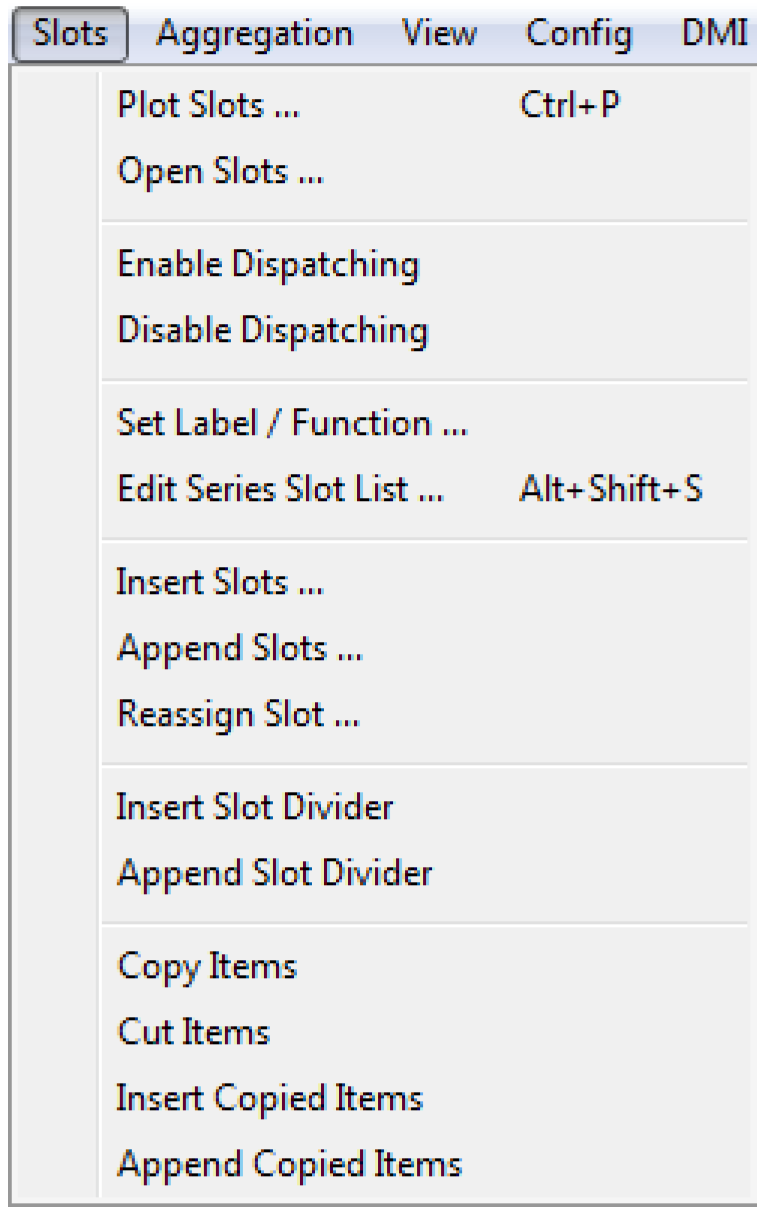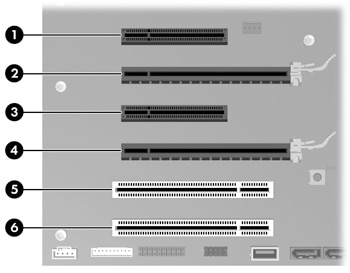The Following Slots Are Open
Which of the following is TRUE regarding stress? It is a physiological or psychological response to a significant or unexpected change or disruption one's like. Selye's term for stress resulting from unpleasant events or conditions is called.
-->Azure Functions deployment slots allow your function app to run different instances called 'slots'. Slots are different environments exposed via a publicly available endpoint. One app instance is always mapped to the production slot, and you can swap instances assigned to a slot on demand. Function apps running under the Apps Service plan may have multiple slots, while under the Consumption plan only one slot is allowed.
There are six time slots during open hours which visitors can select when booking tickets on the website, according to the museum. National Palace Museum to launch online ticketing Visitors will be able to book a time slot to browse the facility, go into some of the cells and interact with the museum exhibits on Saturday, June 16. Check for open slots. WARNING Node 127.0.0.1:7003 has slots in migrating state (6550). WARNING Node 127.0.0.1:7002 has slots in importing state (6550). WARNING The following slots are open: 6550 Check slots coverage. OK All 16384 slots covered.` Then I try to set slot stable as @shinberg said. The check result take back to normal.
The conductors and air in the slots have a lower 28 Jan 2018 The rotor or stator slot of the induction motor skewed through some angle so that the bars lie under alternate harmonic poles of theYou will now see many slots open for one or more days. 12 May 2016 Check for open slots. If the following year is a leap year, then it would be the 4th of October. The 5th of October in the following year is 556 days after the 18th of March in a year. Asked in Ancient History, Lakes.
The following reflect how functions are affected by swapping slots:
- Traffic redirection is seamless; no requests are dropped because of a swap.
- If a function is running during a swap, execution continues and subsequent triggers are routed to the swapped app instance.
Note
Slots are currently not available for the Linux Consumption plan.
Why use slots?
There are a number of advantages to using deployment slots. The following scenarios describe common uses for slots:
- Different environments for different purposes: Using different slots gives you the opportunity to differentiate app instances before swapping to production or a staging slot.
- Prewarming: Deploying to a slot instead of directly to production allows the app to warm up before going live. Additionally, using slots reduces latency for HTTP-triggered workloads. Instances are warmed up before deployment which reduces the cold start for newly-deployed functions.
- Easy fallbacks: After a swap with production, the slot with a previously staged app now has the previous production app. If the changes swapped into the production slot aren't as you expect, you can immediately reverse the swap to get your 'last known good instance' back.
Swap operations
During a swap, one slot is considered the source and the other the target. The source slot has the instance of the application that is applied to the target slot. The following steps ensure the target slot doesn't experience downtime during a swap:
Apply settings: Settings from the target slot are applied to all instances of the source slot. For example, the production settings are applied to the staging instance. The applied settings include the following categories:
- Slot-specific app settings and connection strings (if applicable)
- Continuous deployment settings (if enabled)
- App Service authentication settings (if enabled)
Wait for restarts and availability: The swap waits for every instance in the source slot to complete its restart and to be available for requests. If any instance fails to restart, the swap operation reverts all changes to the source slot and stops the operation.
Update routing: If all instances on the source slot are warmed up successfully, the two slots complete the swap by switching routing rules. After this step, the target slot (for example, the production slot) has the app that's previously warmed up in the source slot.
Repeat operation: Now that the source slot has the pre-swap app previously in the target slot, perform the same operation by applying all settings and restarting the instances for the source slot.
Keep in mind the following points:
At any point of the swap operation, initialization of the swapped apps happens on the source slot. The target slot remains online while the source slot is being prepared, whether the swap succeeds or fails.
To swap a staging slot with the production slot, make sure that the production slot is always the target slot. This way, the swap operation doesn't affect your production app.
Settings related to event sources and bindings need to be configured as deployment slot settingsbefore you initiate a swap. Marking them as 'sticky' ahead of time ensures events and outputs are directed to the proper instance.
Manage settings
When you clone configuration from another deployment slot, the cloned configuration is editable. Some configuration elements follow the content across a swap (not slot specific), whereas other configuration elements stay in the same slot after a swap (slot specific). The following lists show the settings that change when you swap slots.
Settings that are swapped:
- General settings, such as framework version, 32/64-bit, web sockets
- App settings (can be configured to stick to a slot)
- Connection strings (can be configured to stick to a slot)
- Handler mappings
- Public certificates
- WebJobs content
- Hybrid connections *
- Virtual network integration *
- Service endpoints *
- Azure Content Delivery Network *
Features marked with an asterisk (*) are planned to be unswapped.
Settings that aren't swapped:
- Publishing endpoints
- Custom domain names
- Non-public certificates and TLS/SSL settings
- Scale settings
- WebJobs schedulers
- IP restrictions
- Always On
- Diagnostic log settings
- Cross-origin resource sharing (CORS)
Note
Certain app settings that apply to unswapped settings are also not swapped. For example, since diagnostic log settings are not swapped, related app settings like WEBSITE_HTTPLOGGING_RETENTION_DAYS and DIAGNOSTICS_AZUREBLOBRETENTIONDAYS are also not swapped, even if they don't show up as slot settings.
Create a deployment setting
You can mark settings as a deployment setting which makes it 'sticky'. A sticky setting does not swap with the app instance.
If you create a deployment setting in one slot, make sure to create the same setting with a unique value in any other slot involved in a swap. This way, while a setting's value doesn't change, the setting names remain consistent among slots. This name consistency ensures your code doesn't try to access a setting that is defined in one slot but not another.
Use the following steps to create a deployment setting:
- Navigate to Slots in the function app
- Click on the slot name
- Under Platform Features > General Settings, click on Configuration
- Click on the setting name you want to stick with the current slot
- Click the Deployment slot setting checkbox
- Click OK
- Once setting blade disappears, click Save to keep the changes
Deployment
Slots are empty when you create a slot. You can use any of the supported deployment technologies to deploy your application to a slot.
Scaling
All slots scale to the same number of workers as the production slot.
- For Consumption plans, the slot scales as the function app scales.
- For App Service plans, the app scales to a fixed number of workers. Slots run on the same number of workers as the app plan.
Add a slot
You can add a slot via the CLI or through the portal. The following steps demonstrate how to create a new slot in the portal:
Navigate to your function app and click on the plus sign next to Slots.
Enter a name in the textbox, and press the Create button.
Swap slots
You can swap slots via the CLI or through the portal. The following steps demonstrate how to swap slots in the portal:
- Navigate to the function app
- Click on the source slot name that you want to swap
- From the Overview tab, click on the Swap button
- Verify the configuration settings for your swap and click Swap
The operation may take a moment while the swap operation is executing.
With a cool looking illegal street racer car theme.  A fast paced 30 payline slot machine that comes with Wild, Scatter, Free Spins and multipliers.This is one of Saucify's better looking video slots.
A fast paced 30 payline slot machine that comes with Wild, Scatter, Free Spins and multipliers.This is one of Saucify's better looking video slots.
Roll back a swap
If a swap results in an error or you simply want to 'undo' a swap, you can roll back to the initial state. To return to the pre-swapped state, do another swap to reverse the swap.
Remove a slot
You can remove a slot via the CLI or through the portal. The following steps demonstrate how to remove a slot in the portal:
Navigate to the function app Overview
Click on the Delete button
The Following Slots Are Open 5461
Automate slot management
Using the Azure CLI, you can automate the following actions for a slot:
Change App Service plan
With a function app that is running under an App Service plan, you have the option to change the underlying App Service plan for a slot.
Note
You can't change a slot's App Service plan under the Consumption plan.
Use the following steps to change a slot's App Service plan:
Warning The Following Slots Are Open
Navigate to a slot
Under Platform Features, click All Settings
Click on App Service plan
Select a new App Service plan, or create a new plan
Click OK
Limitations
Azure Functions deployment slots have the following limitations:
- The number of slots available to an app depends on the plan. The Consumption plan is only allowed one deployment slot. Additional slots are available for apps running under the App Service plan.
- Swapping a slot resets keys for apps that have an
AzureWebJobsSecretStorageTypeapp setting equal tofiles. - Slots are not available for the Linux Consumption plan.
Support levels
There are two levels of support for deployment slots:
- General availability (GA): Fully supported and approved for production use.
- Preview: Not yet supported, but is expected to reach GA status in the future.

| OS/Hosting plan | Level of support |
|---|---|
| Windows Consumption | General availability |
| Windows Premium | General availability |
| Windows Dedicated | General availability |
| Linux Consumption | Unsupported |
| Linux Premium | General availability |
| Linux Dedicated | General availability |
Next steps
Also found in: Thesaurus, Financial, Acronyms, Encyclopedia, Wikipedia.
time slot
| Noun | 1. | time slot - a time assigned on a schedule or agenda; 'the TV program has a new time slot'; 'an aircraft landing slot' interval, time interval - a definite length of time marked off by two instants |
Want to thank TFD for its existence? Tell a friend about us, add a link to this page, or visit the webmaster's page for free fun content.
 Link to this page:
Link to this page: